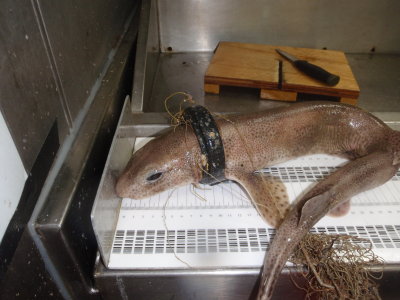
Other threats to wildlife are, for example, smothering of the seabed or environmental disturbances created by marine litter. It also causes damage to people, property and livelihood. People are affected when debris fouls boat propellers, clogs water intakes, blocks pumping systems or causes injuries in beaches and parks. Some estimate that the true economical cost could be easily up to €1 million/year or more for a small fishing community. In addition, the presence of debris along shorelines can lead to serious economic problems for regions that are dependent on tourism.
Micro-plastics?

The lightness and durability of plastic makes it such a useful and versatile material for manufacturers but it also makes it a long-term problem for the environment. Plastics accumulate because they don't biodegrade like many other organic substances. Although they don’t degrade they do fragment in the environment, caused by a combination of mechanical forces like waves and/or photochemical processes triggered by sunlight. This means that plastic breaks down into smaller and smaller fragments, better known as micro-plastics. The origin of these fragments can be broken down fishing nets or lines, plastic bags, films and bottles, remains of oxo-biodegradable plastic, industrial raw material like pellets or other particular direct sources of micro-plastics like for example facial cleansers.
Recently, another source of micro-plastics has been identified, namely the shedding of synthetic fibres from textiles by washing of domestic clothes. Most of them seem to escape from treatment screens at waste water plants and eventually arrive in the ocean. Micro-plastics normally float on the surface because they are less dense than seawater, but the buoyancy and density of plastics may change during their residence at sea due to weathering and biofouling which means they are spread across the surface, water column and sediments. This steady but constant stream of micro-plastics has led to a significant increase in the ratio of plastic to plankton in the water. Because of their size they are available to a much broader range of organisms and have been shown to be ingested by several species ranging from lugworms, mussels, fish and even birds. The ingestion of micro-plastics by species at the base of the food web causes concern as little is known about its effects and transfer across trophic levels.
Contaminant pills?
To make matters worse, plastics leach toxic additives, used in the manufacturing of plastic materials (e.g. Tetrabromobisphenol A or TBBPA), when they arrive in the marine environment and take up and accumulate persistent organic pollutants (POPs) such as carcinogenic and endocrine-disrupting polychlorinated biphenyls (PCBs), polycyclic aromatic hydrocarbons (PAHs) and organochlorine pesticides while residing in the oceans. Plastic debris can attract and concentrate POPs up to a million times their levels in the surrounding seawater and when consumed by marine animals, the POPs endanger both the creatures that ingest them and organisms higher up on the food chain.
This means that the possible effects of micro-plastics on marine organisms after ingestion are possibly threefold: physical blockage or damage of feeding apparatus or digestive tract, leaching of plastic additives into organisms after digestion, and accumulation of sorbed chemicals from the particle towards the organism. But the effects don’t stop there; as micro-plastics are found in organisms at the base of our food webs they will accumulate when shifting up in the food web and thus could arrive back on our plates!








